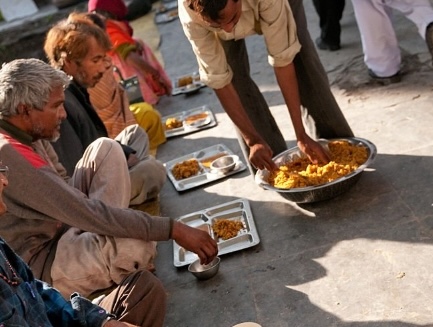People and the planet need food processing
Food processing is critical to the establishment
of a sustainable food system that advances food security and ensures economic opportunity while delivering healthy, sustainable diets to consumers around the world.
Food safety 
with purpose
Food processing has been instrumental in delivering safe, nutritious, and affordable foods and beverages to more populations around the world and helping address two of the world’s biggest challenges: access to food and malnutrition.
How food processing improves food and nutrition security
Nutritious and fortified
Fortification of commonly consumed foods and beverages supplies essential micronutrients, such as iron, folic acid, and vitamins.
Accessible and affordable
Processed foods and beverages provide a solution to the practical challenges of daily life and can help consumers make achieving a healthier diet more feasible.
Safe and stable
Formulations and processing techniques are scientifically developed and designed to deliver safe foods and beverages.
sustainability 
with purpose
Manufacturers are working to create more healthier food and beverage choices while using fewer natural resources – driving up environmental standards and creating sustainable supply chains that protect and restore biodiversity, promote equity and social well-being, improve rural livelihoods and build thriving communities.
Learn more about food processing

Fortification
During the milling process, micronutrients like iron or folic acid are often added to flour to improve its nutritional quality and supply essential vitamins to large parts of the population.
Fortification
Infant cereals fortified with iron and vitamin B for the prevention of anaemia; x milk and juices fortified with calcium and vitamin D for proper bone development and the prevention of rickets; iodine added to salt for the prevention of goitre; and fortification of wheat flour with folic acid for the prevention of neural tube defects. Currently, over 140 countries globally have guidance or regulations in place for fortification programmes, the majority of which are mandatory.

Food safety
Formulations and processing techniques are scientifically developed and designed to deliver food that is safe, eliminating or preventing the presence or growth of any harmful chemical contaminants and micro-organisms that could cause food-borne illnesses.
Food safety
Formulations and processing techniques are scientifically developed and designed to deliver food that is safe, eliminating or preventing the presence or growth of any harmful chemical contaminants and micro-organisms that could cause food-borne illnesses.
Shelf stability & shelf life
Fresh products like fruits and vegetables are often canned or frozen to extend shelf life. Preservatives are added to daily products like bread, cereals, and yoghurt to limit the growth of microbes and prevent oxidation, which help keep foods from spoiling.
Shelf stability & shelf life
Processing can prolong shelf-life, delaying food spoilage, reducing food waste, and ensuring that food is accessible and affordable to consumers, regardless of economic status.

Fortification
During the milling process, micronutrients like iron or folic acid are often added to flour to improve its nutritional quality and supply essential vitamins to large parts of the population.
Fortification
Infant cereals fortified with iron and vitamin B for the prevention of anaemia; x milk and juices fortified with calcium and vitamin D for proper bone development and the prevention of rickets; iodine added to salt for the prevention of goitre; and fortification of wheat flour with folic acid for the prevention of neural tube defects. Currently, over 140 countries globally have guidance or regulations in place for fortification programmes, the majority of which are mandatory.

Food safety
Formulations and processing techniques are scientifically developed and designed to deliver food that is safe, eliminating or preventing the presence or growth of any harmful chemical contaminants and micro-organisms that could cause food-borne illnesses.
Food safety
Formulations and processing techniques are scientifically developed and designed to deliver food that is safe, eliminating or preventing the presence or growth of any harmful chemical contaminants and micro-organisms that could cause food-borne illnesses.
Shelf stability & shelf life
Fresh products like fruits and vegetables are often canned or frozen to extend shelf life. Preservatives are added to daily products like bread, cereals, and yoghurt to limit the growth of microbes and prevent oxidation, which help keep foods from spoiling.
Shelf stability & shelf life
Processing can prolong shelf-life, delaying food spoilage, reducing food waste, and ensuring that food is accessible and affordable to consumers, regardless of economic status.
